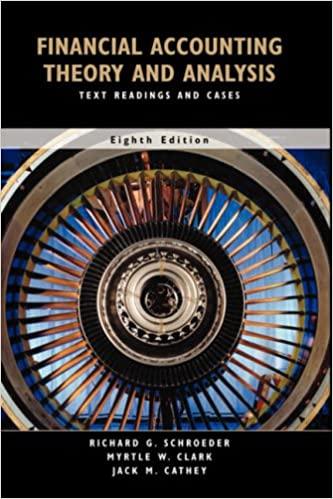Question
On January 1, 2020, an investor company acquired 100% of the outstanding voting common stock of an investee company in exchange for $140,000 worth of
On January 1, 2020, an investor company acquired 100% of the outstanding voting common stock of an investee company in exchange for $140,000 worth of investor company common stock. The following financial statement information is for the investor company and the investee company on January 1, 2020, prepared immediately before this transaction.
| Book Values | ||
| Investor | Investee | |
| Current assets | 95,000 | 61,000 |
| Noncurrent assets | 298,000 | 116,000 |
| Total assets | 393,000 | 177,000 |
| Liabilities | 172,000 | 95,000 |
| Common stock ($1 par) | 21,000 | 11,000 |
| Additional paid-in capital | 123,000 | 53,000 |
| Retained earnings | 77,000 | 18,000 |
| Total liabilities & equity | 393,000 | 177,000 |
Assume that the fair values of the investees net assets approximated the recorded book values of the investees net assets, except the fair value of the investees identifiable noncurrent assets is $20,000 higher than book value. In addition, the investees pre-transaction tax bases in its individual net assets approximate their reported book values. Any book-tax differences relate entirely to tax-deductible items. Assume the marginal tax rate is 40% for the investor and investee.
The transaction is a taxable asset acquisition under the Internal Revenue Code. As part of the acquisition, the investor agreed to pay investees selling shareholders additional compensation (on March 15, 2022) if investees operations achieved $30,000 in net income during the year ended December 31, 2020 and $35,000 in net income during the year ended December 31, 2021. The fair value of this provision is $20,000 on January 1, 2020. Investor uses the equity method to account for its investment in Investee. For Part A, assume any AAP generated from the transaction is non-amortizable and the investee paid no dividends in 2020.
Investee earned $31,000 of net income and $6,000 of other comprehensive income during the year ended December 31, 2020. There were no intercompany sales in 2020.
What is the pre-consolidation balance of the Investment in Investee account on the books of Investor on December 31, 2020?
Step by Step Solution
There are 3 Steps involved in it
Step: 1

Get Instant Access to Expert-Tailored Solutions
See step-by-step solutions with expert insights and AI powered tools for academic success
Step: 2

Step: 3

Ace Your Homework with AI
Get the answers you need in no time with our AI-driven, step-by-step assistance
Get Started


